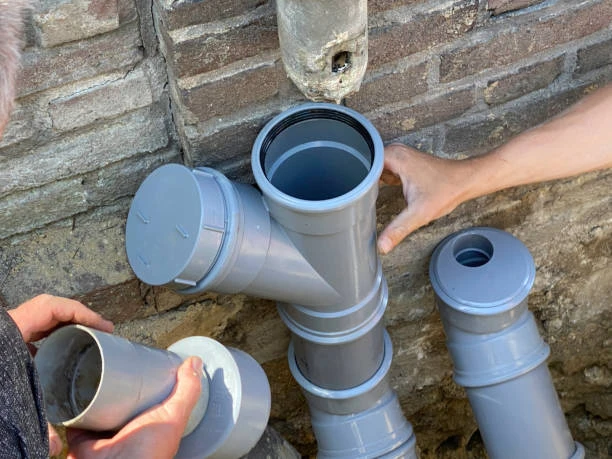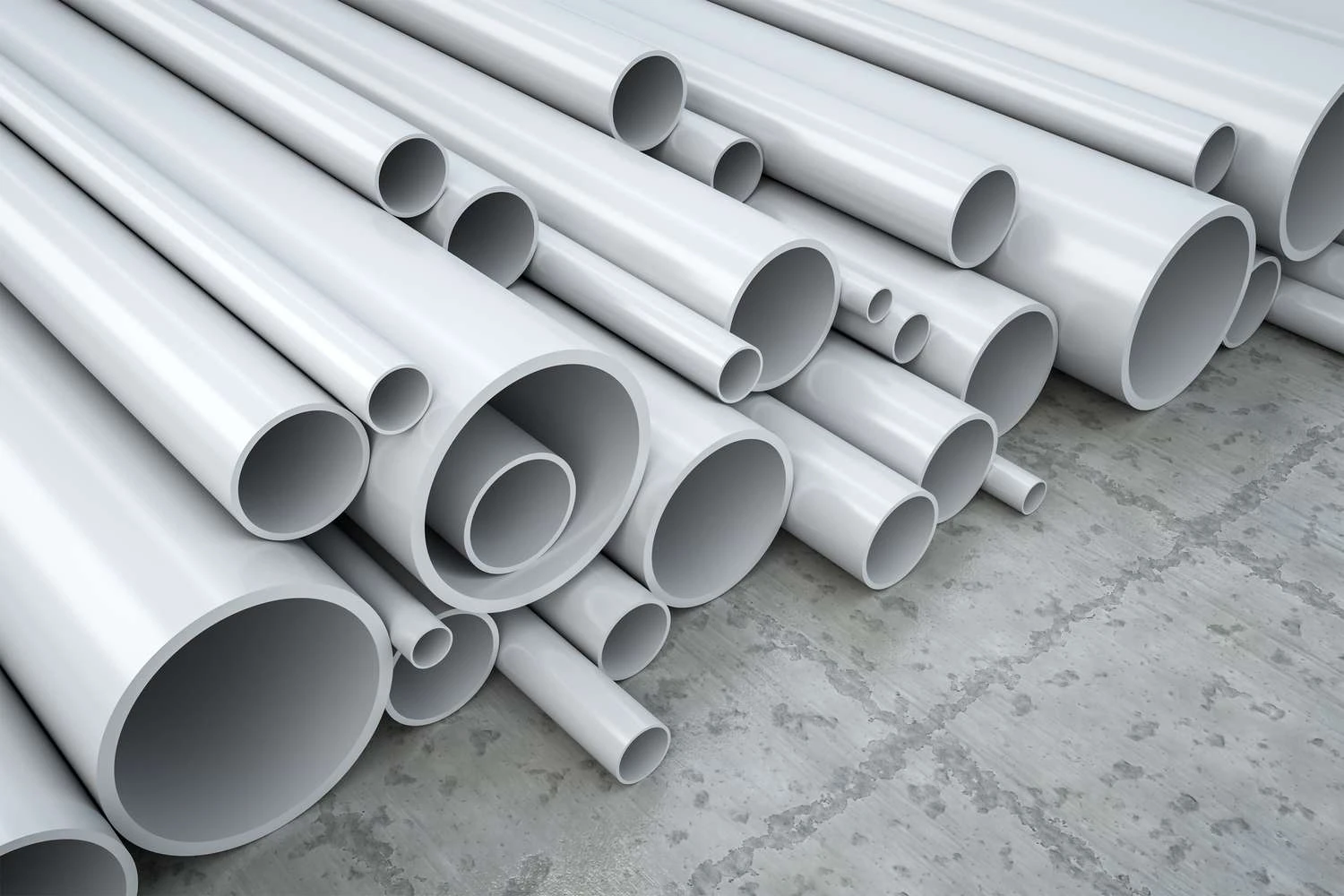Introduction
Plastic pipes are widely used in water distribution systems, sewer lines, and gas transport. However, concerns about their environmental impact have been growing, especially with the potential for microplastics to be released into the environment. Plastic pipe materials are exposed to a variety of environmental stressors, including ozone, which can degrade the polymers and potentially lead to microplastic formation. This article investigates the behavior of microplastics release from plastic pipe materials that have been exposed to ozone.
As ozone exposure degrades plastics, it breaks down the polymer chains, which can cause the release of smaller plastic particles. These particles, often referred to as microplastics, can accumulate in the environment, affecting ecosystems and human health. This investigation aims to assess the impact of ozone on plastic pipe materials, particularly focusing on microplastic formation and release.
Understanding Microplastics and Their Environmental Impact
Microplastics are defined as plastic particles smaller than 5 millimeters in size. They are a significant environmental concern because they can be ingested by marine organisms and enter the food chain. Plastic pipe materials, such as PVC (Polyvinyl Chloride) and HDPE (High-Density Polyethylene), are durable and commonly used in infrastructure. However, these materials are not immune to environmental degradation, especially when exposed to atmospheric conditions like ozone.
Ozone exposure is known to affect the physical properties of plastic materials. When plastic pipe materials are exposed to ozone, their surface structure and chemical composition can change, leading to the release of small plastic particles. These particles may then contribute to the growing problem of microplastic contamination in water and soil.
The Role of Ozone in Degrading Plastic Pipe Materials
Ozone is a highly reactive molecule composed of three oxygen atoms. It is a natural part of the Earth’s atmosphere, but at ground level, it is a pollutant that can degrade materials, including plastic pipe materials. The degradation process occurs when ozone interacts with the chemical bonds within the polymer matrix, causing the material to weaken and break apart. Over time, this results in the formation of microplastics.
Research shows that plastic pipes exposed to ozone can undergo surface oxidation, leading to the embrittlement of the material. This makes the pipes more susceptible to physical stress, such as cracking or fragmenting. As the material breaks down, it releases microplastics into the surrounding environment. This process may be accelerated by exposure to sunlight and environmental pollutants, further exacerbating the release of microplastics.
Investigating the Release of Microplastics
The investigation into microplastics release from ozone-exposed plastic pipe materials involves a series of experiments designed to simulate real-world environmental conditions. Researchers expose different types of plastic pipe materials to ozone at varying concentrations and durations to study the impact on microplastic formation.
In these experiments, PVC and HDPE pipes are selected because they are commonly used in infrastructure. The pipes are subjected to ozone exposure in controlled environments that mimic the atmospheric conditions these materials face over time. The goal is to observe how the ozone-induced degradation process leads to the release of microplastics.
Methodology of the Investigation in Plastic Pipe Materials
The methodology of the investigation includes several key steps. First, samples of plastic pipe materials are prepared and cut into standardized pieces. These pieces are then exposed to ozone concentrations ranging from low to high for specified time periods. The ozone exposure simulates long-term environmental degradation.
After the exposure period, the pipes are examined to assess the physical changes in their structure. Microscopic analysis is conducted to identify any fractures, cracks, or surface erosion. Additionally, researchers use filtration and centrifugation techniques to isolate any microplastic particles released during the exposure. These particles are then characterized by size, shape, and polymer type.
The study also includes a comparison between untreated plastic pipe materials and those exposed to ozone. This helps determine the extent to which ozone exposure accelerates the release of microplastics. The research team looks for correlations between ozone concentration, exposure time, and the quantity of microplastics released.
Results: Ozone Exposure and Microplastic Release in Plastic Pipe Materials
Preliminary results from the investigation suggest that ozone exposure significantly impacts the degradation of plastic pipe materials. Both PVC and HDPE pipes show signs of surface oxidation after prolonged exposure to ozone. The oxidation leads to an increase in surface roughness, which may facilitate the fragmentation of the material into smaller pieces.
Furthermore, the experiments reveal that PVC pipes are more prone to microplastic release than HDPE pipes. The difference in behavior is attributed to the chemical structure of the two materials. PVC contains chlorine atoms, which make the polymer more susceptible to oxidation when exposed to ozone. In contrast, HDPE, a polyethylene-based material, is more resistant to ozone degradation and shows lower levels of microplastic formation.
As ozone exposure increases, the amount of microplastics released from both materials also increases. The study found that after several weeks of exposure to moderate ozone levels, plastic pipe materials released microplastic particles ranging from a few micrometers to several millimeters in size. These particles were primarily composed of the same polymer material as the pipe itself.

Environmental Implications of Microplastic Release in Plastic Pipe Materials
The release of microplastics from ozone-exposed plastic pipe materials has significant environmental implications. As plastic pipes degrade over time, the small particles they release can enter water systems, soil, and marine environments. These microplastics are difficult to remove and can persist in the environment for hundreds of years.
The presence of microplastics in aquatic ecosystems poses a threat to marine life. Fish, birds, and other organisms may ingest microplastics, which can lead to health problems and even death. Furthermore, microplastics can carry toxic chemicals and pollutants, which are then transferred through the food chain.
In soil, microplastics can affect the quality of land and the health of plant life. As plastic particles accumulate in the soil, they can alter its structure and hinder plant growth. The long-term effects on soil fertility and agriculture are still under investigation but could be detrimental.
Mitigating the Release of Microplastics from Plastic Pipes
Given the potential environmental impact of microplastic release, it is important for manufacturers and urban planners to consider alternative solutions to reduce the degradation of plastic pipe materials. Several strategies can help mitigate the release of microplastics:
- Use of more resistant materials: Choosing materials that are less prone to oxidation, such as HDPE, can reduce microplastic formation.
- Coating or treating pipes: Protective coatings or treatments that prevent ozone exposure can help preserve the integrity of plastic pipes.
- Regular monitoring and maintenance: Cities and municipalities can monitor the condition of plastic pipes and replace them before they begin to degrade significantly.
- Research into biodegradable alternatives: Research into biodegradable plastics may provide a solution for reducing the environmental impact of plastic pipe materials in the long term.
Conclusion
The investigation into the release of microplastics from ozone-exposed plastic pipe materials highlights the significant environmental concerns posed by the degradation of these materials. As cities continue to rely on plastic pipes for infrastructure, it is crucial to consider the long-term effects of ozone exposure on these materials. While PVC pipes are more vulnerable to ozone-induced degradation, HDPE pipes show better resistance to microplastic release.
Understanding the release behavior of microplastics will help inform future materials selection and maintenance practices for urban infrastructure. By implementing strategies to mitigate microplastic release, cities can reduce the environmental impact of plastic pipe materials and move toward more sustainable infrastructure solutions.
Frequently Asked Questions (FAQ)
1. What are microplastics?
Microplastics are plastic particles smaller than 5 millimeters in size that can be harmful to the environment and wildlife.
2. How does ozone affect plastic pipe materials?
Ozone exposure causes the chemical bonds in plastic pipe materials to break down, leading to surface oxidation and the release of microplastics.
3. Which plastic pipe materials release more microplastics when exposed to ozone?
PVC pipes release more microplastics than HDPE pipes due to their chemical structure, which is more prone to ozone degradation.
4. How can we prevent microplastics from plastic pipes?
Using more resistant materials, applying protective coatings, and conducting regular maintenance can help minimize microplastic release from plastic pipes.
5. What are the environmental impacts of microplastics from plastic pipes?
Microplastics can pollute water and soil, harm marine life, and disrupt ecosystems, posing significant environmental challenges.

















